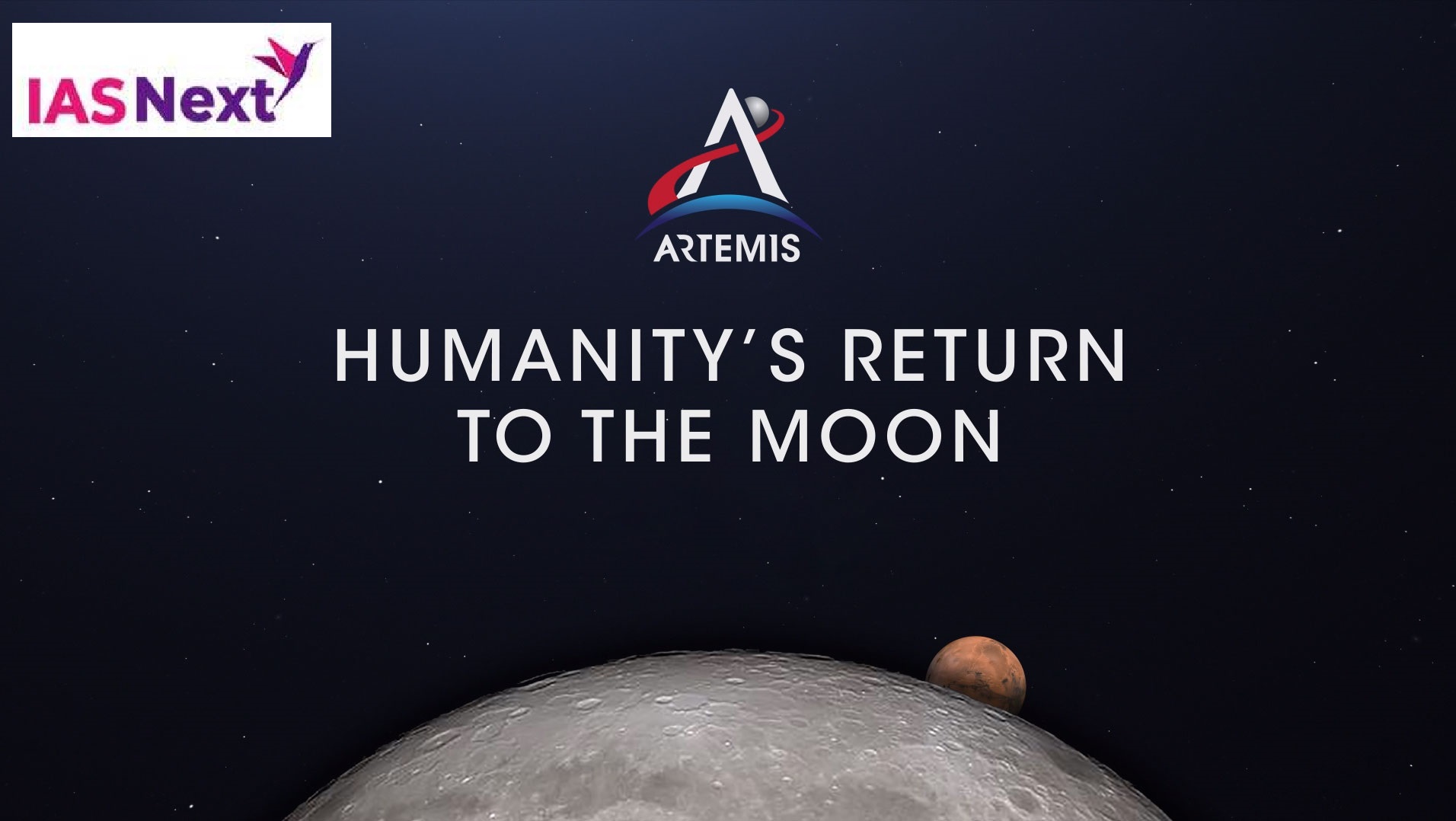CURRENT AFFAIRS
Get the most updated and recent current affair content on Padhaikaro.com
Artemis Program
- IAS NEXT, Lucknow
- 03, Mar 2022

Reference News:-
NASA’s first crewed landing of the Artemis program on the moon is expected to take place in 2026. Meanwhile, NASA will launch Artemis 1 in May 2022.
- Reasons for the delay: NASA said it needed time to develop and test the human landing system and NASA’s next generation spacesuits.
What is Artemis?
Artemis stands for Acceleration, Reconnection, Turbulence and Electrodynamics of Moon’s Interaction with the Sun.
- It is NASA’s next mission to the Moon.
Objective:
To measure what happens when the Sun’s radiation hits our rocky moon, where there is no magnetic field to protect it.
Artemis was the twin sister of Apollo and goddess of the Moon in Greek mythology.
Significance of the mission:
With the Artemis program, NASA will land the first woman and next man on the Moon by 2024.
Mission details:
- NASA’s powerful new rocket, the Space Launch System (SLS), will send astronauts aboard the Orion spacecraft nearly a quarter million miles from Earth to lunar orbit.
- Astronauts will dock Orion at the Gateway and transfer to a human landing system for expeditions to the surface of the Moon.
- They will return to the orbital outpost to board Orion again before returning safely to Earth.
Artemis 1 vs. 2 vs. 3:
NASA will fly two missions around the Moon to test its deep space exploration systems.
- Artemis 1 is aiming to send an uncrewed spacecraft around the moon using a combination of the never-flown Space Launch System rocket, along with the once-flown Orion spacecraft.
- NASA hopes to extend the program with the moon-orbiting crewed Artemis 2 mission in 2024, then a landing on Artemis 3 in 2025, ahead of other crewed missions later in the 2020s.
Scientific objectives:
- Find and use water and other critical resources needed for long-term exploration.
- Investigate the Moon’s mysteries and learn more about our home planet and the universe.
- Learn how to live and operate on the surface of another celestial body where astronauts are just three days from home.
- Prove the technologies we need before sending astronauts on missions to Mars, which can take up to three years roundtrip.
Moon Exploration:
- In 1959, the Soviet Union’s uncrewed Luna 1 and 2 became the first rover to visit the Moon.
- Before the USA sent the Apollo 11 mission to the Moon, it sent three classes of robotic missions between 1961 and 1968.
- After July 1969, 12 American astronauts walked on the surface of the Moon until 1972.
- In the 1990s, the USA resumed lunar exploration with robotic missions Clementine and Lunar Prospector.
- In 2009, it began a new series of robotic lunar missions with the launch of the Lunar Reconnaissance Orbiter (LRO) and the Lunar Crater Observation and Sensing Satellite (LCROSS).
- In 2011, NASA began the ARTEMIS.
- In 2012, the Gravity Recovery and Interior Laboratory (GRAIL) spacecraft studied the Moon’s gravity.
- Apart from the USA, the European Space Agency, Japan, China, and India have sent missions to explore the Moon. China landed two rovers on the surface, which includes the first-ever landing on the Moon’s far side in 2019.